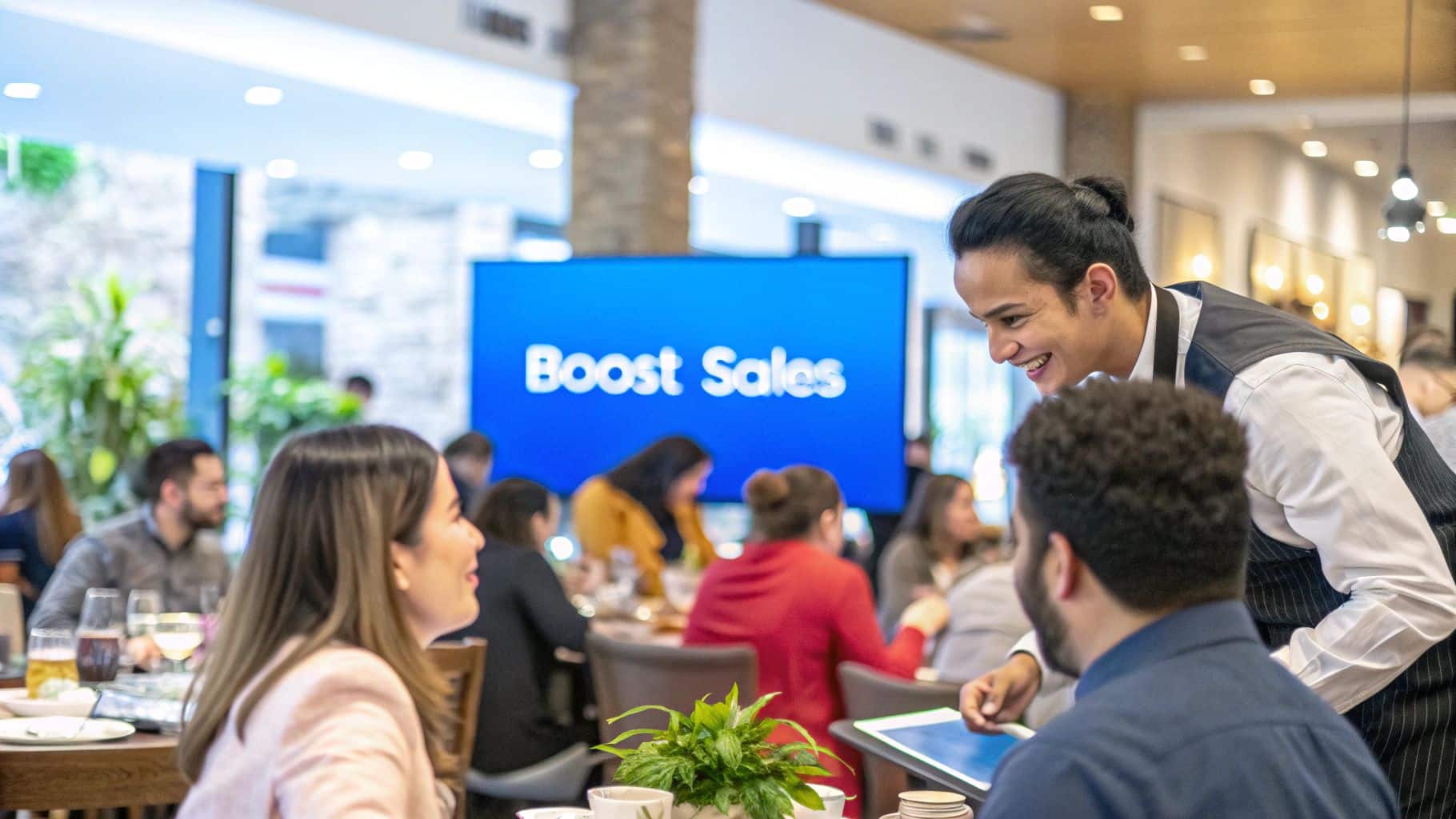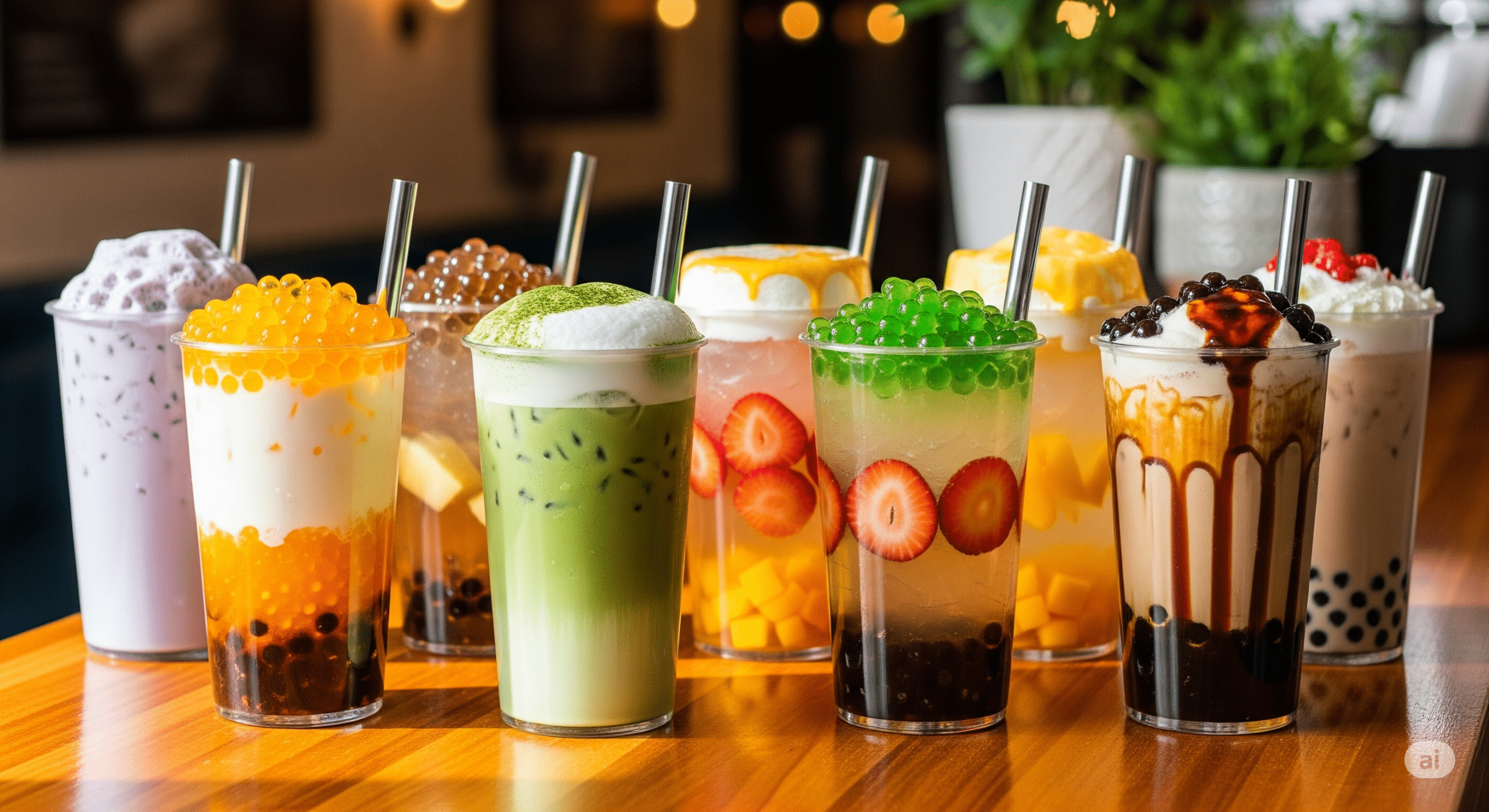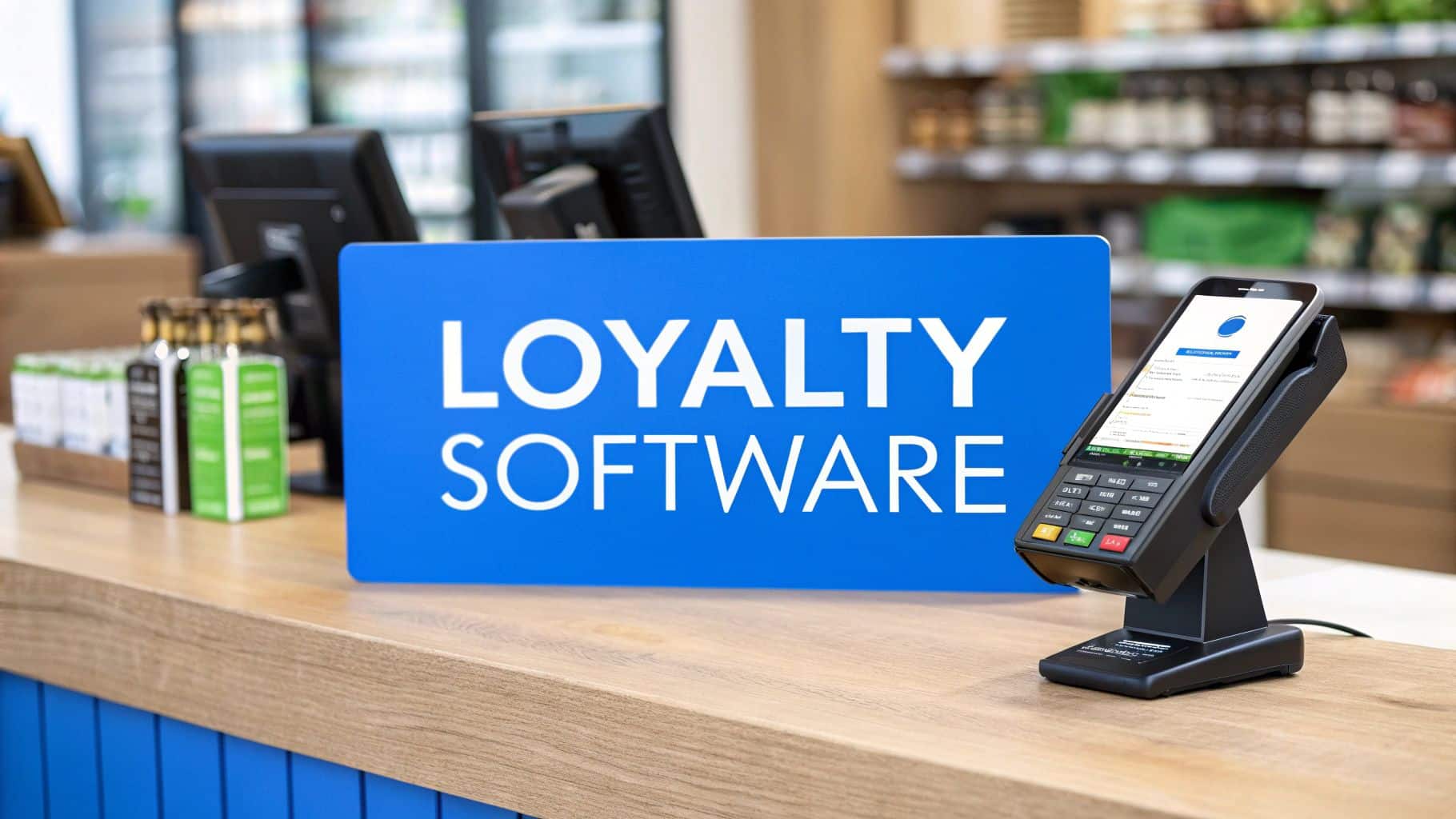Menu engineering is a powerful technique that combines sales analysis, pricing strategy, and menu design to maximize restaurant profitability and enhance customer experience. By carefully evaluating item profitability, product placement, and customer preferences, restaurant owners and managers can optimize their menu layout to drive sales and improve profit margins. In this article, we dive deep into the principles of menu engineering and explore how thoughtful item categorization, promotional tactics, and menu psychology can revolutionize your restaurant’s revenue strategy.
Table of Contents
- Understanding Menu Engineering
- Strategic Menu Design and Layout
- Pricing Strategy and Profit Margin Management
- Leveraging Sales Analysis and Demand Forecasting
- Continuous Menu Optimization and Updates
- Biyo POS for Restaurant Revenue Optimization
- FAQ
Understanding Menu Engineering
Before diving into actionable steps, it is essential to understand what menu engineering truly involves. At its core, menu engineering is a data-driven process that focuses on analyzing each menu item’s profitability and popularity. This evaluation allows restaurants to categorize items effectively and apply strategies that enhance overall sales and profits.
What Is Menu Engineering?
Menu engineering is the systematic practice of evaluating each item on a restaurant’s menu by analyzing two key aspects: how well the item sells and how much profit it generates. Restaurants categorize their menu items into four groups based on these criteria: “stars” (high popularity and high profitability), “puzzles” (low popularity but high profitability), “plowhorses” (high popularity but low profitability), and “dogs” (low popularity and low profitability). This method helps restaurant owners and managers understand which items are driving their business and which ones may be holding them back.
This approach allows restaurateurs to make informed decisions about pricing, portion sizes, and item placement rather than relying on intuition or guesswork. For example, they might promote puzzle items with strategic marketing or adjust the recipes of plowhorses to improve their margins. Similarly, low-performing items might be revised or removed altogether to make room for more profitable dishes.
In essence, menu engineering transforms the menu from a simple list of offerings into a strategic tool that guides customer choices while maximizing revenue. It empowers restaurant managers to leverage hard data in making decisions, such as redesigning the menu layout, experimenting with pricing, or running targeted promotions. This ongoing process not only improves immediate sales but also builds a deeper understanding of customer behavior over time, enabling long-term optimization and sustained profitability.
The Role of Menu Psychology
Menu psychology plays a crucial role in menu engineering by influencing customer decisions through visual appeal and item placement. It explores how customers read and interact with menus, tapping into subconscious behaviors to guide their choices. For instance, customers often look at the top right corner or center of a menu first, so placing high-margin dishes in these “sweet spots” can significantly increase their orders.
Restaurants use various visual tools such as font styles, colors, boxes, and images to highlight certain items without overwhelming the customer. By understanding how people process visual information, menu designers can subtly encourage diners to select dishes that boost profits, creating a win-win for both the restaurant and its guests.
This psychological insight is not about tricking customers but about presenting options in a way that aligns with their natural behavior patterns, making decision-making easier and more satisfying. Incorporating menu psychology into menu engineering improves sales and enhances the overall dining experience.
Benefits of Effective Menu Engineering
Implementing menu engineering offers a wide range of benefits beyond increasing profits. It equips restaurants with precise data on each menu item’s profitability and popularity, allowing for smarter decisions around pricing, portion sizing, and product placement. This control reduces waste and improves cost management, contributing to healthier profit margins.
Menu engineering also supports sales growth by enabling cross-selling and upselling opportunities. By positioning complementary items strategically, restaurants can encourage customers to add appetizers, sides, or beverages that increase the average check size. Additionally, tracking item popularity helps identify trends, so restaurants can adapt their offerings in response to changing customer preferences.
Ultimately, menu engineering builds a dynamic and optimized menu that continuously evolves to meet business objectives and customer needs. This approach not only improves financial results but also strengthens brand loyalty and customer satisfaction over time. Through ongoing analysis and adjustment, restaurants remain agile and competitive in an ever-changing market.
Strategic Menu Design and Layout
Once you grasp the fundamentals of menu engineering, the next step is to focus on the strategic design and layout of the menu itself. The way a menu is organized visually and structurally has a direct impact on what customers order, making thoughtful design an essential component of a profitable menu.
Effective Menu Layout Principles
A successful menu layout organizes items into clear, logical sections such as appetizers, main courses, desserts, and beverages. This structure helps customers quickly find what they want, reducing frustration and decision fatigue. Using distinct headings and subheadings with clear descriptions enhances readability and sets the tone for the dining experience.
In menu engineering, placing high-profit and popular items in “hot spots” such as the upper right corner or center of the menu page draws customer attention and increases the likelihood of those items being ordered. Meanwhile, less profitable dishes are positioned in less prominent locations to minimize distraction and encourage better-performing choices.
Additionally, balancing text with visual elements such as ample white space, subtle icons, and clean dividers plays a crucial role in preventing menus from appearing cluttered or overwhelming to customers. When a menu is visually crowded, diners can feel stressed or rushed, which may lead to decision fatigue or frustration. By thoughtfully incorporating these design elements, restaurants create a calm and inviting visual flow that naturally guides customers’ eyes across the menu. This encourages deeper engagement with the offerings, allowing diners to absorb details about dishes and prices without feeling bombarded. As a result, customers make more confident and satisfying choices, which not only improves their overall dining experience but also drives higher sales and profitability for the restaurant. This careful balance between visual clarity and information density is a subtle yet powerful tool in menu engineering that directly impacts revenue generation and customer satisfaction.
Visual Appeal and Menu Psychology
Visual appeal is much more than decoration; it’s a key driver of customer decisions through the science of menu psychology. Using font sizes, colors, and graphics strategically can highlight certain dishes without appearing pushy. For example, bold fonts or contrasting colors on high-margin items catch the eye naturally, increasing the chance they’ll be ordered.
Photos are a double-edged sword in menu design. When used sparingly and tastefully, high-quality images of signature dishes can whet appetites and boost sales. However, overusing pictures can make a menu appear cheap or cluttered, reducing its effectiveness. Therefore, selective use of images paired with clean, readable fonts and ample white space creates a balanced, attractive menu.
The overall visual appeal of a menu significantly affects customers’ emotional responses and willingness to order higher-margin items. A well-designed menu that incorporates principles of menu psychology creates an inviting, stress-free environment where customers feel guided rather than pressured. This encourages exploration and upselling, which enhances sales while maintaining customer trust and satisfaction. Such menus contribute not only to short-term revenue increases but also foster long-term loyalty through positive dining experiences.
Item Categorization and Product Placement
Strategic item categorization ensures that menu items are grouped logically, making the ordering process intuitive and seamless. Groupings can be based on meal type, price range, or popularity, allowing customers with different preferences and budgets to easily find suitable options. Proper categorization also supports menu engineering goals by highlighting key dishes appropriately.
Smart product placement involves positioning complementary items near each other to encourage cross-selling. For example, pairing certain wines with entrées or suggesting sides alongside mains invites customers to order more than just a single dish. Furthermore, placing new or promotional items next to best-sellers increases their exposure, helping to boost trial rates and sales for these dishes.
Thoughtful item categorization and product placement also reflect the restaurant’s brand identity and storytelling. By grouping items to tell a cohesive culinary story, restaurants engage diners emotionally while maximizing sales opportunities. This holistic approach turns the menu into both a marketing tool and a guide for memorable dining experiences, ultimately benefiting the restaurant’s reputation and profitability.
Pricing Strategy and Profit Margin Management
Pricing strategy is one of the most critical aspects of menu engineering. It directly influences profit margins, customer perceptions, and competitive positioning. A carefully balanced pricing approach ensures that customers perceive value while the restaurant maintains healthy earnings.
Cost Control and Portion Sizing
Effective cost control begins with understanding the exact cost of ingredients used in each dish and then managing portion sizes accordingly. Precise portion control prevents waste, maintains consistency, and ensures each dish remains profitable. This step is crucial in menu engineering as it ties food costs directly to pricing decisions.
If a menu item has a high food cost but low sales volume, chefs and managers may consider reducing portion sizes, substituting expensive ingredients with equally tasty alternatives, or revising the recipe altogether. Conversely, for popular dishes with strong demand, it may be possible to slightly increase prices without negatively impacting customer satisfaction, thereby boosting profit margins.
Moreover, ongoing monitoring and adjustment of portion sizes and ingredient costs help restaurants maintain an ideal balance between quality and profitability. By closely tracking these factors, restaurants can quickly respond to market changes, supplier price fluctuations, and customer feedback, ensuring that each dish remains both appealing and financially sustainable.
Pricing Techniques for Profit Maximization
Menu engineering incorporates several psychological pricing techniques to maximize profits. Charm pricing, where prices end in .95 or .99 rather than rounding up to whole numbers, creates a perception of better value. Anchoring uses high-priced items to set a reference point, making mid-priced items seem more reasonable and attractive to customers.
Avoiding obvious discounts or price slashes helps maintain the restaurant’s brand image and perceived quality. Instead, tiered pricing with varied portion sizes or add-ons allows customers to choose according to their budget while enabling the restaurant to optimize revenue across different segments.
In addition, employing pricing strategies such as bundling or value meals can increase average check sizes without sacrificing profit margins. By combining popular items with complementary sides or beverages at a slightly reduced price, restaurants create appealing options that feel like a good deal to customers while still maintaining healthy profitability.
Competitive Analysis in Pricing
Regularly analyzing competitors’ menus and pricing helps restaurants stay aligned with market expectations and avoid pricing themselves out of the market. This analysis includes not only the price points but also the quality, portion sizes, and unique selling points of competitors’ offerings.
Rather than engaging in a price war, restaurants benefit more by emphasizing unique value propositions such as exceptional quality, atmosphere, or innovative dishes. Pricing adjustments should be data-driven, factoring in costs, customer feedback, and competitive positioning to find the sweet spot that maximizes profit without sacrificing appeal.
Strategic competitive analysis enables restaurants to anticipate market trends, capitalize on underserved niches, and position themselves effectively within their local landscape. This forward-thinking approach is essential for maintaining long-term profitability and customer loyalty in an increasingly crowded market.
Leveraging Sales Analysis and Demand Forecasting
Data-driven insights from sales analysis and demand forecasting are essential tools in menu engineering. They provide actionable information that helps restaurants optimize menus, streamline operations, and tailor promotions for maximum impact.
Sales Analysis for Menu Optimization
Analyzing sales data over time reveals which items generate the most revenue and which lag behind. This continuous review enables managers to identify “stars” and “puzzles,” then adjust marketing efforts or recipes to increase the popularity of high-profit but low-sales items. It also highlights “dogs” that might be candidates for removal or revision.
Using sales analysis for inventory planning reduces overstocking and waste, ensuring ingredients are available for best-selling dishes while minimizing excess. Furthermore, understanding customer preferences through sales trends enables restaurants to innovate confidently and retire outdated or unpopular items.
Consistently leveraging sales data also uncovers seasonal trends and customer buying patterns, allowing restaurants to fine-tune their offerings and marketing campaigns. This ongoing process ensures the menu remains relevant, financially viable, and aligned with guest expectations, ultimately driving sustained business growth.
Demand Forecasting and Inventory Control
Demand forecasting leverages historical sales data, seasonal trends, and market conditions to predict future item sales. This foresight allows restaurants to prepare adequate inventory levels, reducing food waste and ensuring popular items are always available.
Accurate forecasting also supports better staffing decisions, avoiding under- or over-staffing during busy or slow periods. When integrated with menu engineering, demand forecasting ensures operational efficiency aligns with sales goals, contributing to better overall restaurant performance.
In addition, demand forecasting helps mitigate risks associated with supply chain disruptions or sudden shifts in customer demand. By planning ahead, restaurants maintain a seamless dining experience and optimize profitability, even in unpredictable market conditions.
Cross-Selling and Promotional Tactics
Cross-selling techniques recommended by menu engineering encourage customers to purchase complementary items, increasing the average check size. For example, suggesting a dessert or beverage that pairs well with a main course can entice diners to add more to their orders.
Promotional tactics such as limited-time offers, combo meals, or highlighting high-margin “star” items create excitement and urgency. These promotions must be carefully monitored to ensure they contribute positively to profitability without eroding margins.
Furthermore, well-timed promotions can introduce new or underperforming items to customers, stimulating interest and trial. When combined with personalized recommendations and loyalty programs, these tactics strengthen customer relationships while boosting sales in a sustainable way.
Continuous Menu Optimization and Updates
Menu engineering is a continuous journey rather than a one-off task. Regular monitoring and updating of the menu ensure that restaurants stay responsive to evolving customer preferences, market trends, and business needs.
Monitoring Item Popularity and Customer Preferences
Customer tastes and preferences shift due to many factors including seasonality, emerging food trends, and demographic changes. Restaurants that track item popularity over time can identify new favorites and detect declining interest in others. This insight enables proactive menu adjustments before sales drop significantly.
Gathering direct customer feedback through surveys, comment cards, or online reviews complements sales data and provides a fuller picture of customer satisfaction. Combining quantitative and qualitative data supports more accurate and customer-centric menu decisions.
Such ongoing monitoring enables restaurants to stay ahead of market shifts and competitor moves. By understanding customer preferences deeply, restaurants can innovate their menus, introduce fresh concepts, and retire items that no longer resonate, keeping the dining experience exciting and relevant.
Implementing Menu Updates Effectively
Changing a menu requires careful planning to minimize disruption. Clear communication with kitchen and service staff about new items or changes ensures smooth operations and consistent customer experiences. Training on new dishes and pricing helps avoid confusion and errors during busy service periods.
Updating menus across all customer touchpoints—printed menus, digital displays, and online platforms—is vital for brand consistency. Testing new items or layout changes through soft launches or limited-time trials can provide valuable feedback and reduce risks associated with major updates.
By executing menu changes thoughtfully and methodically, restaurants maintain customer trust and optimize operational efficiency. This careful approach reduces mistakes, enhances staff confidence, and ultimately supports successful menu evolution aligned with business goals.
Utilizing Technology for Menu Optimization
Technology plays an increasingly important role in menu engineering. Advanced POS systems like Biyo POS offer real-time sales tracking, detailed reporting, and inventory management, which simplify the collection and analysis of key data. These tools empower restaurants to make faster, more informed menu decisions.
Digital menus and ordering platforms allow for quick updates, dynamic pricing, and targeted promotions, increasing the flexibility and responsiveness of menu management. Integration of customer data helps tailor offers and menu suggestions, further enhancing sales and customer satisfaction.
Leveraging technology not only streamlines the menu engineering process but also creates opportunities for innovation and growth in a competitive marketplace. Investing in the right tools positions restaurants for long-term success and adaptability.
Biyo POS for Restaurant Revenue Optimization
Biyo POS is a cutting-edge point-of-sale system tailored for the unique needs of restaurants focused on menu engineering and revenue optimization. It provides comprehensive tools for sales analytics, inventory tracking, and customizable menu management, all accessible through an intuitive interface.
With Biyo POS, restaurant managers gain real-time visibility into item profitability and popularity, enabling swift adjustments to pricing strategies, product placement, and promotions. The system supports portion control features and cost management, helping maintain strong profit margins without sacrificing quality or customer satisfaction.
By adopting Biyo POS, restaurants equip themselves with a powerful ally in menu engineering, simplifying complex processes and enhancing decision-making. This results in increased revenue, reduced waste, and an improved overall dining experience that keeps customers coming back.
FAQ
What is menu engineering and why is it important?
Menu engineering is the process of analyzing and optimizing menu items based on their profitability and sales performance. It allows restaurants to focus on promoting high-margin, popular dishes while improving or removing underperforming items. This practice is crucial for boosting revenue, improving customer satisfaction, and maintaining cost control, turning the menu into a strategic asset rather than just a price list.
How does menu psychology affect customer choices?
Menu psychology influences how customers perceive and interact with a menu. By using visual cues like item placement, fonts, colors, and images, restaurants can guide diners toward selecting dishes that are more profitable. Understanding subconscious customer behavior allows restaurants to design menus that are intuitive, engaging, and aligned with sales goals without appearing manipulative.
What role does pricing strategy play in menu engineering?
Pricing strategy is essential in balancing customer value and restaurant profitability. Menu engineering incorporates techniques such as charm pricing, anchoring, and tiered pricing to set prices that attract customers and maximize profit margins. A well-planned pricing strategy helps maintain brand image and ensures competitiveness in the market.
How often should a restaurant update its menu?
Menus should be reviewed and updated regularly, ideally every few months, to reflect changes in customer preferences, ingredient availability, and market trends. Continuous menu optimization keeps offerings fresh and relevant, supports profitability, and enhances the overall dining experience by responding to evolving tastes.
Can technology help with menu engineering?
Absolutely. Technology, particularly modern POS systems like Biyo POS, streamlines menu engineering by providing real-time sales data, detailed reports, and inventory management. These tools simplify decision-making around pricing, item placement, and promotions, making it easier to optimize the menu efficiently and effectively.






